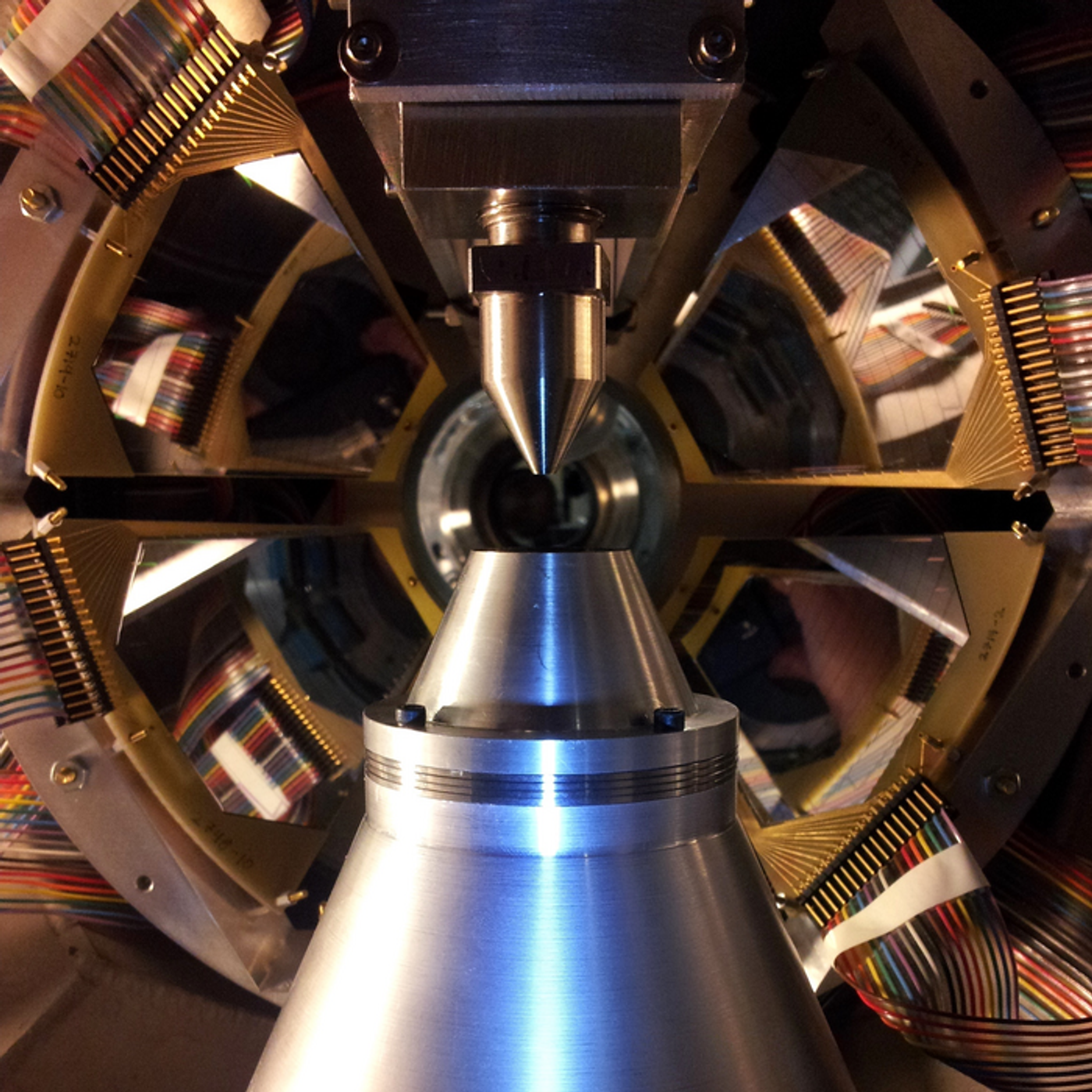Lab-Created Nuclear Reaction Helps Understand Neutron Stars
A recent study published in Physical Review Letters examines how scientists from the U.S. Department of Energy’s Oak Ridge National Laboratory (ORNL) have successfully created key nuclear reactions that occur on the surface of a neutron star as it's consuming a nearby star, also known as a companion star. This study holds the potential to help scientists better understand the nuclear reactions with stars, specifically pertaining to how they produce the variety of nuclear isotopes.
Image of JENSA's high-density heluim gas jet target system used to test nuclear reactions that occur n the surface of neutron stars. (Credit: Steven Pain/ORNL, U.S. Dept. of Energy)
“Neutron stars are really fascinating from the points of view of both nuclear physics and astrophysics,” said Dr. Kelly Chipps, who is a nuclear astrophysicist at ORNL and a co-author on the study. “A deeper understanding of their dynamics may help reveal the cosmic recipes of elements in everything from people to planets.”
For the study, the researchers tested a long-standing theoretical model pertaining to element creation. Dr. Chipps oversees the Jet Experiments in Nuclear Structure and Astrophysics (JENSA), which houses the world’s highest-density helium gas jet target system. Using this system, the researchers tested nuclear physics processes that occur in space, but now on Earth in a lab. The reason why helium gas was used is because neutron stars consume vast amounts of hydrogen and helium from a companion star, resulting in large explosions that produce new chemical elements on the neutron star’s surface.
For the experiments, the researchers used a beam of the isotope argon-34—the number is the combined number of protons and neutrons—to strike a target of helium-4 nuclei alpha particles and created calcium-38. However, due to the excitation of the nuclei, one proton was ejected from the isotope, resulting in potassium-37 nuclei.
“Our result has shown that the statistical model is valid for this particular reaction, and that removes a tremendous uncertainty from our understanding of neutron stars,” said Dr. Chipps. “It means that we now have a better grasp of how those nuclear reactions are proceeding.”
Going forward, the team plans to further test the model’s limits by building off a previous study that examined atomic mass 22. During that study, they discovered the theoretical model was incorrect by almost ten-fold, whereas this most recent study examined atomic mass 34, and they discovered the model was correct.
“Somewhere between [atomic] mass 20 and 30, this transition between where the statistical model is valid and where it’s not valid is taking place,” Chipps said. “The next thing is to look for reactions in the middle of that range to see where this transition is occurring.” Dr. Chipps and her colleagues have started going down that path.
What new discoveries will scientists make about atomic nuclei and their processes on the surface of neutron stars? Only time will tell, and this is why we science!
Sources: Physical Review Letters, NASA, Oak Ridge National Laboratory, Physical Review Letters (1)
As always, keep doing science & keep looking up!









